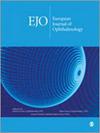动静脉瘘栓塞后由外膜静脉压升高引起的眼内高压。
IF 1.4
4区 医学
Q3 OPHTHALMOLOGY
European Journal of Ophthalmology
Pub Date : 2025-09-01
Epub Date: 2025-04-29
DOI:10.1177/11206721251338707
引用次数: 0
摘要
眼内压升高是公认的与动静脉瘘相关的并发症,动静脉瘘通常形成于颈动脉和海绵窦之间。我们报告一个病例的病人谁发展矛盾恶化综合征几天后,他接受了两阶段经动脉栓塞手术左侧筛动静脉瘘。患者表现为医源性左眼上静脉部分梗阻引起的膜外静脉压升高导致眼内高压。本文章由计算机程序翻译,如有差异,请以英文原文为准。
Intraocular hypertension caused by elevated episcleral venous pressure following arteriovenous fistula embolization.
Increased intraocular pressure due to elevated episcleral venous pressure is a recognized complication associated with arteriovenous fistulas, which typically form between the carotid artery and the cavernous sinus. We report a case of a patient who developed paradoxical worsening syndrome a few days after he underwent a two-staged transarterial embolization procedure of a left sided ethmoidal arteriovenous fistula. The patient presented with signs of elevated episcleral venous pressure leading to intraocular hypertension caused by the iatrogenic partial obstruction of the left superior ophthalmic vein.
求助全文
通过发布文献求助,成功后即可免费获取论文全文。
去求助
来源期刊
CiteScore
3.60
自引率
0.00%
发文量
372
审稿时长
3-8 weeks
期刊介绍:
The European Journal of Ophthalmology was founded in 1991 and is issued in print bi-monthly. It publishes only peer-reviewed original research reporting clinical observations and laboratory investigations with clinical relevance focusing on new diagnostic and surgical techniques, instrument and therapy updates, results of clinical trials and research findings.

 求助内容:
求助内容: 应助结果提醒方式:
应助结果提醒方式:


